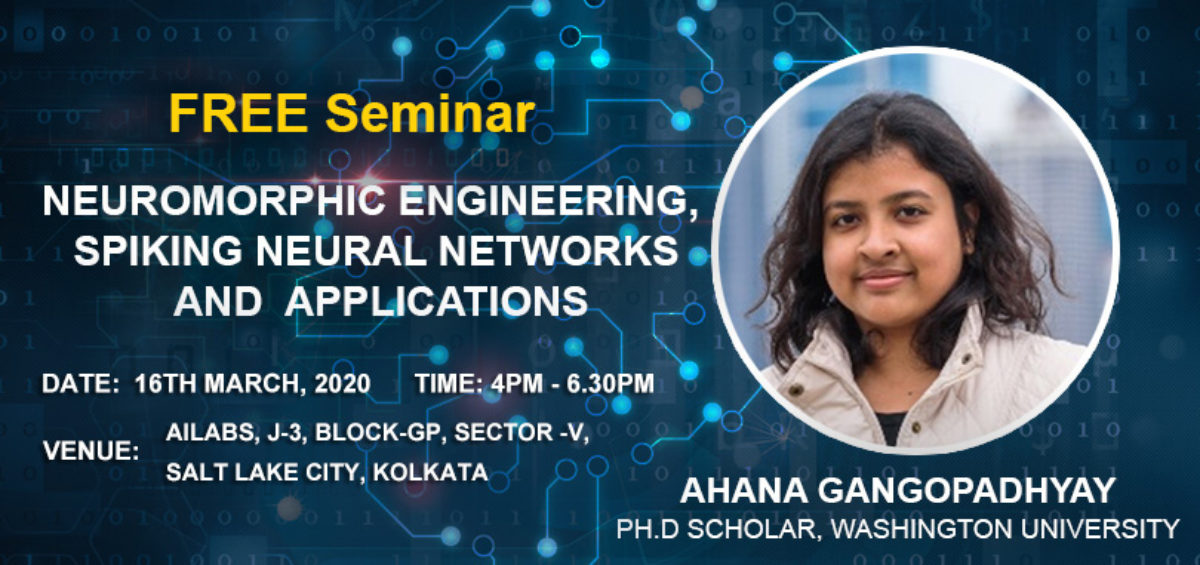Speaker : Ahana Gangopadhyay
Date : March 16, 2020
Time : 4pm onward
Venue : J-3, Block-GP, Sector-V, Kolkata 700091
Details : Ahana Gangopadhyay received her B.E. degree in Electrical Engineering from Jadavpur University, India in 2013 and M.S. degree in Electrical Engineering from Washington University in St. Louis, USA in 2017. She is currently a Ph.D. candidate at Washington University. Her research interests include conventional and neuromorphic machine learning, optimization and computer vision algorithms. She delivered a lecture on March 16, 2020 afternoon at AILABS premises.
Artificial neural networks popularly used in machine learning are an abstraction of biological neural networks. In biology, neurons typically communicate using electrical pulses called spikes or action potentials. A class of neural networks called spiking neural networks or SNNs, more closely modeled on biological networks than ANNs, are increasingly becoming popular as a means of closing the gap between machine learning models and our brain in terms of cognitive performance and energy efficiency. In this talk, she gave a brief overview of the field of neuromorphic engineering which studies biologically inspired spiking neural networks, neuromorphic algorithms which use computational principles from biology to solve machine learning tasks and their advantages in comparison to traditional neural networks. Also talked about her Ph.D. work on developing spiking neuron and population models that bridge the gap between neuromorphic algorithms and traditional energy-based machine learning models. Finally, talked on other interesting machine learning projects ongoing at Washington University in St. Louis, including resonant machine learning models and bomb-sniffing cyborg locusts.




Leave a Comment